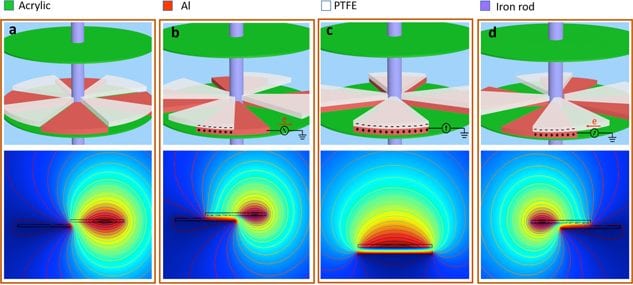Energy is the key to promote social and economic development, and plays an important role in sustainable development for humans. With the energy crisis becoming more and more serious today, the use of natural clean energy to generate electricity has attracted more and more attention. As fossil fuels continue to be depleted, clean energies, such as vibration, air flow, water waves, and rotation, have become the focus. However, in these clean energies much of the random mechanical energy is wasted due to lack of effective techniques. In one such technology, two solid materials were used in contact periodically with each other to generate triboelectric charges on their interface.
Until recently, energy could not be harvested from various triboelectrifications. In 2012, Dr. Z.L. Wang at Georgia Institute of Technology creatively invented triboelectric nanogenerators (a review from this group can be found here in Advanced Engineering Materials).

The structure diagram of the hybridized TENG. More information here.
The triboelectric nanogenerator has been explored as a new technology to harvest various energies that is mainly based on the coupling of contact electrification and electrostatic induction. Triboelectric charges are created between the interfaces of different triboelectric materials owing to the different triboelectric polarities.
As a result, one triboelectric material can grab electrons from the other when they are in contact. Once the contact state changes, the potential difference between the two triboelectric materials can drive triboelectric charges to periodically flow through the external circuit, leading to the alternating current signals.
Both water and air are used to develop triboelectric nanogenerators as reported by Hulin Zhang, Yuan Lin and co-workers. Two triboelectric nanogenerators with different configurations were designed and hybridized with Faraday electromagnetic induction generator to generate electricity, which can convert the kinetic energy from wind and flowing water, and the electrostatic energy in water, into electrical energy. The hybrid nanogenerator can sustainably supply energy to charge a lithium–ion battery, and thus, the battery has enough energy to drive different devices continuously, such as a wireless temperature humidity sensor and digital pH tester.
This environment-friendly and configuration-simple was to generate electricity will greatly promote the development of green energy and self-powered sensor systems, which gain more attention in the future.

















